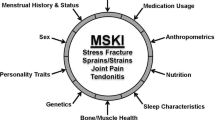Abstract
Comprehensive Soldier Fitness (CSF) is a public health program intended to improve US Army service personnels’ resilience to military stressors including combat and operational experiences. The program uses psychological and behavioral strategies that have been shown to enhance resilience in children and adolescents. CSF has many modules that target a variety of dimensions of wellness. One of the core themes to CSF is the promotion of optimism and positive reframing of challenging situations. To date, the CSF program has not been critically and independently evaluated. This commentary argues that an emphasis on positive emotions and optimism could be maladaptive for post-combat recovery. Clinical and public behavioral health practitioners and researchers can play an important role in evaluating CSF psychological strategies.
Similar content being viewed by others
References
Peterson C, Park N, Castro CA. Assessment for the U.S. army comprehensive soldier fitness program: The global assessment tool. The American Psychologist 2011; 66(1): 10–18.
Reivich KJ, Seligman ME, McBride S. Master resilience training in the U.S. army. The American Psychologist 2011; 66(1): 25–34.
Penn Resiliency Program Curriculum. Available online at http://www.ppc.sas.upenn.edu/prpsum.htm. Accessed June 17th, 2012.
Cornum R, Matthews MD, Seligman ME. Comprehensive soldier fitness: Building resilience in a challenging institutional context. The American Psychologist 2011; 66(1): 4–9.
Tedeschi RG, McNally RJ. Can we facilitate posttraumatic growth in combat veterans? The American Psychologist 2011; 66(1): 19–24.
Mental Health Advisory Team (MHAT-IV 2009). Operation Iraqi Freedom (OIF) 07–09. Available online at http://www.armymedicine.army.mil/reports/mhat/mhat_vi/mhat-vi.cfm. Accessed June 17th, 2012.
Hoge CW, Auchterlonie JL, Milliken CS. Mental health problems, use of mental health services, and attrition from military service after returning from deployment to Iraq or Afghanistan. Journal of the American Medical Association 2006; 295(9): 1023–1032.
Eisen SV, Schultz MR, Vogt D, et al. Mental and Physical Health Status and Alcohol and Drug Use Following Return From Deployment to Iraq or Afghanistan. American Journal of Public Health 2012; 102 (S1): S66-S73
Reger MA, Gahm GA, Swanson RD, et al. Association between number of deployments to Iraq and mental health screening outcomes in US army soldiers. The Journal of Clinical Psychiatry 2009; 70(9): 1266–1272.
Jakupcak M, Cook J, Imel Z, et al. Posttraumatic stress disorder as a risk factor for suicidal ideation in Iraq and Afghanistan war veterans. Journal of Traumatic Stress 2009; 22(4): 303–306.
Kang HK, Bullman TA. Risk of suicide among US veterans after returning from the Iraq or Afghanistan war zones. Journal of the American Medical Association 2008; 300(6): 652–653.
Brunwasser SM, Gillham JE, Kim ES. A meta-analytic review of the Penn Resiliency Program’s effect on depressive symptoms. Journal of Consulting and Clinical Psychology 2009; 77(6): 1042–1054.
Comprehensive Soldier Fitness, Official US Army homepage. Available online at http://www.army.mil/article/24837/comprehensive-soldier-fitness. Accessed June 17th, 2012.
Department of Defense Bloggers Roundtable with Brigadier General Rhonda Cornum, Director, Comprehensive Soldier Fitness Program, US Army. Available online at www.defense.gov/Blog_files/…/20091118_cornum_transcript.pdf. Accessed June 17th, 2012.
Eidelson R, Pilisuk M, Soldz S. The dark side of comprehensive soldier fitness. The American Psychologist 2011; 66(7): 643–4.
Algoe SB, Fredrickson BL. Emotional fitness and the movement of affective science from lab to field. The American Psychologist 2011; 66(1): 35–42.
Wortman CB, Boerner K. Beyond the Myths of Coping with Loss: Prevailing Assumptions Versus Scientific Evidence. In: HS Friedman. The Oxford Handbook of Health Psychology. New York: Oxford University Press, Inc, 2011, pp. 438–476.
Norem JK, Illingworth KSS. Mood and performance among defensive pessimists and strategic optimists. Journal of Research in Personality 2004; 38(4): 351–366.
Lazarus RS. The Trivialization of Distress, Practical Applications of Stress and Coping. In: RS Lazarus. Fifty Years of the Research and Theory of RS Lazarus: an analysis of historical and perennial issues. New Jersey: Lawrence Ehrblum Associates, Inc, 1998, pp. 251–270.
De Raeve L. Positive thinking and moral oppression in cancer care. European Journal of Cancer Care 2007; 6(4): 249–256.
Bourke J. An Intimate History of Killing. London: Granta, 1999, pp 238.
Wolfendale J. Performance-enhancing technologies and moral responsibility in the military. The American Journal of Bioethics 2008; 8(2): 28–38.
Henning KR, Frueh BC. Combat guilt and its relationship to PTSD symptoms. Journal of Clinical Psychology 1997; 53(8): 801–808.
Budden A. The role of shame in posttraumatic stress disorder: A proposal for a socio-emotional model for DSM-V. Social Science & Medicine 2009; 69(7): 1032–1039.
Witvliet CV, Phipps KA, Feldman ME, et al. Posttraumatic mental and physical health correlates of forgiveness and religious coping in military veterans. Journal of Traumatic Stress 2004; 17(3): 269–273.
Litz BT, Stein N, Delaney E, et al. Moral injury and moral repair in war veterans: A preliminary model and intervention strategy. Clinical Psychology Review 2009; 29(8): 695–706.
Faller H, Schilling S, Lang H. Causal attribution and adaptation among lung cancer patients. Journal of Psychosomatic Research 1995; 39(5): 619–627.
Glinder JG, Compas BE. Self-blame attributions in women with newly diagnosed breast cancer: A prospective study of psychological adjustment. Health Psychology: Official Journal of the Division of Health Psychology, American Psychological Association 1999;18(5): 475–481.
Litz BT, Gray MJ, Bryant RA, et al. Early intervention for trauma: Current status and future directions. Clinical Psychology: Science and Practice 2002; 9(2):112–134.
Quick JC. Missing: Critical and Skeptical Perspectives on Comprehensive Soldier Fitness. The American Psychologist 2011, 66(7):645.
Lester PB, McBride S, Bliese PD, et al. (2011). Bringing Science to Bear. An Empirical Assessment of the Comprehensive Soldier Fitness Program. The American Psychologist 2011, 66(1), 77–81.
Foran HM, Adler AB, McGurk D, et al. Soldiers’ Perceptions of Resilience Training and Postdeployment Adjustment: Validation of a Measure of Resilience Training Content and Training Process. Psychological Services 2012, Apr. 30.
Nash WP. U.S. Marine Corps and Navy combat and operational stress continuum model: A tool for leaders. In: EC Ritchie. Combat and Operational Behavioral Health. Washington, DC: Borden Institute, 2011, pp. 107–119.
Conflict of Interest
None.
Author information
Authors and Affiliations
Corresponding author
Rights and permissions
About this article
Cite this article
Smith, S.L. Could Comprehensive Soldier Fitness Have Iatrogenic Consequences? A Commentary. J Behav Health Serv Res 40, 242–246 (2013). https://doi.org/10.1007/s11414-012-9302-2
Published:
Issue Date:
DOI: https://doi.org/10.1007/s11414-012-9302-2




